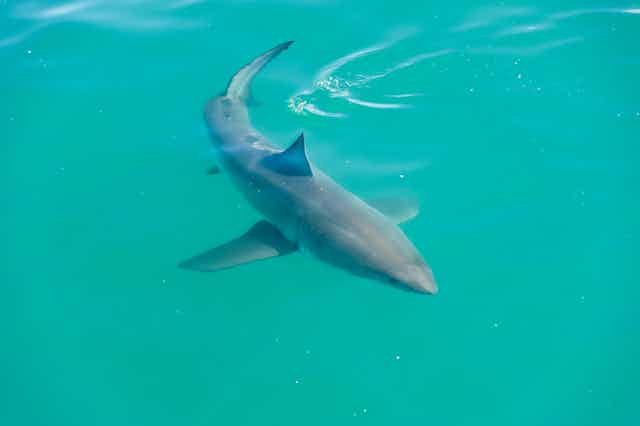New South Wales is aiming to trial new technologies to prevent shark bites, following a cluster of shark encounters in recent months.
Last week I attended a Shark Summit hosted by NSW Premier Mike Baird. Experts gathered from Australia, South Africa and the United States, joined by politicians and representatives of non-government organisations, to look at emerging technologies designed to increase protection for bathers and surfers.
Data held at Taronga Zoo show that shark encounters in Australia have doubled in frequency from 1990-2000 to 2000-15. However, deaths from these encounters remain consistently low (around one person killed per year).
Baird has made it clear that he wants an “evidence-based scientific approach” to the problem and is keen to provide finance for an immediate trial using one or more new technologies. There was thus substantial pressure on the scientists to “get it right”.
Ranking new technology
Technologies were evaluated for the summit in a report by independent consultants, and had to fit eight specific criteria, which were ranked in order of importance. Technologies included both shark deterrents (such as the SharkShield) and shark detectors (such as the Cleverbuoy).
There was some debate about the methods used by the consultants to rank technologies. Many scientists at the summit felt that other ways of choosing technologies could also have been used, and that emphasising technologies that needed to work across a whole beach – the method outlined in the report – unfairly eliminated personal shark deterrents from scoring highly.
Experts presented technologies from all parts of the globe. There are a surprising number of different technologies being developed.
Fencing off beaches
The summit looked at physical barriers, such as the Eco Shark Barrier and Bionic Barriers. These form continuous mesh-like barriers that exclude sharks from beaches.
These barriers also indiscriminately exclude other larger organisms, are expensive, and haven’t been tested on the surf coasts of eastern Australia. As our coasts have sporadic intense surge events that can move shipping containers, these nets would have to withstand such extreme conditions.
Also promising is the Sharksafe Barrier, made up of rigid pipes that project vertically from the seafloor and mimic giant kelp. The physical structure is based on the observation that sea lions routinely hide in kelp forests to avoid being eaten by white sharks. This barrier also incorporates a magnetic barrier, but there is a lack of evidence to show that strong magnetic fields can deter sharks. Once again, this product has never been tested in Australian waters.
Getting personal
Technologies in personal shark deterrents are also emerging. The SharkShield has been tested and verified by three independent scientific studies, including against white sharks. Downsides of this technology are that the shark needs to be quite close for the SharkShield to act as a deterrent and its effectiveness depends on the motivation of the shark (it won’t stop a shark determined to eat you, but it may discourage accidental bites).
Shark Attack Mitigation Systems (SAMS) offered solutions for surfers by using either naturally occurring cryptic or warning patterns on wetsuits and surfboards to reduce detection or to mimic something dangerous, respectively. SAMS also produces the Clever Buoy, which uses sonar technology and recognition software to detect sharks that pass by. This latter technology is still in the testing stage.
South Africa’s Shark Spotters Program was also discussed and critiqued for Australian conditions. Here, spotters based on high cliffs along the False Bay coastline on the Cape Peninsula use binoculars to sight sharks. If a sighting occurs, a siren sounds and people leave the beach. While an eloquent solution for South Africa, spotting sharks in this manner may not be as easy on our flatter and more windswept coastline.
Getting new tech right
It appears that the main culprits at present for attacks in northern NSW may be white sharks measuring 2-3 m. While this is yet to be confirmed scientifically, an emerging consensus amongst some scientists is that white sharks at this size shift their diet from fish to larger animals and may be learning how to recognise their new food sources.
Bites on humans may therefore be merely cases of mistaken identity, although this will be scant consolation to the people, families and communities who have lost loved ones in shark encounters.
The general agreement from the NSW Shark Summit is that one or a couple of the new technologies should be trialled this summer in response to the cluster of shark bites in 2015 so far.
As a scientist, I only ask that any trial be run in a rigorous scientific manner that will directly and unambiguously test the efficacy of the technology while minimising ecological impact. It is important that we get this right, both for people and for the sharks.

